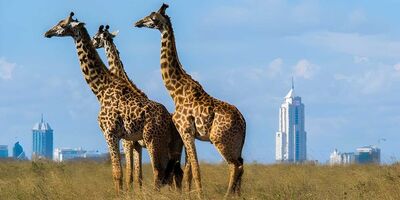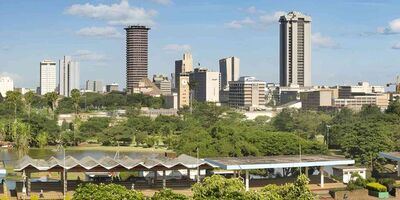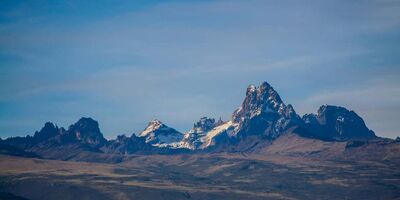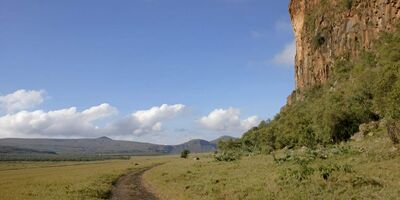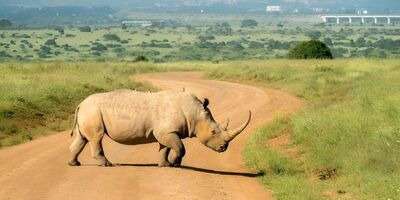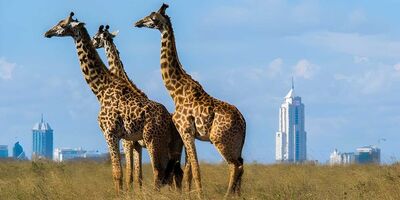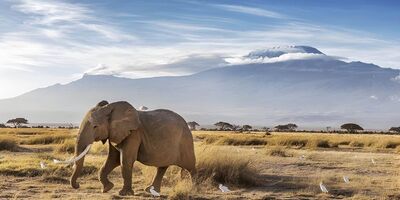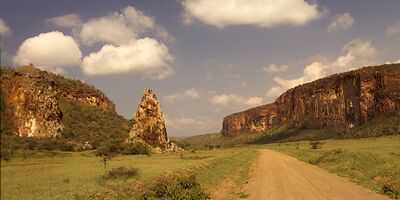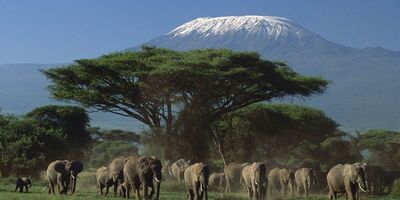Mount Longonot , Nairobi
About Mount Longonot
Nestled within the Great Rift Valley, Mount Longonot stands as one of Kenya's most iconic natural wonders. This stratovolcano, with its rugged terrain and breathtaking views, offers a unique experience for both seasoned hikers and nature enthusiasts alike. Rising to an impressive 2,776 meters above sea level, Mount Longonot is not only a geological marvel but also a treasure trove of biodiversity.
Understanding the Geology of Mount Longonot
Mount Longonot, formed through volcanic activity, is a stratovolcano—a type of volcano characterized by layers of hardened lava, tephra, and volcanic ash. Its name, derived from the Maasai word "Oloonong'ot," meaning "mountain of many spurs" or "steep ridges," reflects its rugged nature. The volcano last erupted in the 1860s, leaving behind a caldera that is both expansive and intriguing. The caldera, approximately 8 km in diameter, is a central feature of the mountain and hosts a dense forest that adds to the mountain's mystique.
Flora and Fauna: A Biodiversity Hotspot
The Mount Longonot National Park, established to protect the mountain and its surroundings, is a haven for wildlife and plant species. The mountain's slopes are dotted with acacia trees, which dominate the landscape. As one ascends, the vegetation transitions, revealing diverse plant species that have adapted to the varying altitudes.
The crater floor, covered in thick forest, is home to several wildlife species, including zebras, giraffes, buffalos, and various antelope species. Bird watchers will also find Mount Longonot to be a paradise, as the area is rich in birdlife, including raptors like the Augur Buzzard and the Verreaux's Eagle.
Travel Details for Visiting Mount Longonot
How to Get There: Mount Longonot is located approximately 90 km northwest of Nairobi, making it easily accessible for a day trip. The most common route is via the Mai Mahiu Road (A104), which connects Nairobi to Naivasha. The drive takes about 2 hours, depending on traffic. Public transport options are available from Nairobi to Naivasha, followed by a short taxi ride to the park entrance.
Entrance Fees: The entrance fees to Mount Longonot National Park vary depending on your nationality. For non-resident adults, the fee is around $30 USD, while residents and citizens pay a reduced rate. Children and students also enjoy discounted rates. Payment can be made at the park gate, typically in cash or via mobile payment services.
Best Time to Visit: The ideal time to visit Mount Longonot is during the dry seasons, from January to March and July to October. During these months, the weather is more predictable, and the trails are less slippery, making the hike safer and more enjoyable.
Nearby Attractions: While in the area, visitors can explore other attractions such as Lake Naivasha, known for its boat rides and diverse birdlife, or the Hell's Gate National Park, which offers unique rock formations and the chance to see wildlife on foot or by bike.
Accommodation: Accommodation options near Mount Longonot include a range of lodges, hotels, and campsites in Naivasha. Popular choices include Naivasha Kongoni Lodge, Enashipai Resort & Spa, and Fisherman's Camp for those seeking a closer connection to nature.
ms along the trail?
- Restrooms are available at the park gate, but there are no facilities along the trail itself. It's advisable to use the restroom before starting the hike.
10. Can children hike Mount Longonot?
- Children can hike Mount Longonot, but parents should assess their fitness and stamina levels. The steep sections may be challenging for younger children, so caution is advised.
The Climb: A Challenging but Rewarding Trek
Climbing Mount Longonot is an exhilarating experience that attracts hikers from all over the world. The trek to the summit is about 3.1 miles (5 km) from the park gate, with an additional 1.5 miles (2.4 km) required to circumnavigate the crater rim. The climb is steep and can be physically demanding, particularly the final stretch to the summit, which is known as "The Toughest Kilometer." However, the effort is well worth it as the panoramic views from the summit are simply breathtaking.
From the top, hikers are treated to a 360-degree view of the surrounding landscape, including the shimmering waters of Lake Naivasha, the sprawling Great Rift Valley, and on a clear day, the distant peaks of the Aberdare Range and Mount Kenya.
Preparation and Safety Tips
Before embarking on the climb, it is essential to be well-prepared. The trek can be taxing, and proper gear is crucial. Sturdy hiking boots, a hat, sunscreen, and plenty of water are must-haves for anyone looking to conquer Mount Longonot. Given the steep nature of the terrain, trekking poles can also be beneficial in maintaining balance, especially during the descent.
It is advisable to start the hike early in the morning to avoid the midday heat, which can be intense. The best time to visit Mount Longonot is during the dry seasons—between January and March or July and October—when the trails are less slippery, and the weather is more predictable.
The Significance of Mount Longonot to the Local Community
Mount Longonot holds cultural significance to the Maasai people, who have lived in the region for centuries. The mountain is considered sacred, and traditional ceremonies are sometimes held on its slopes. The Maasai also benefit economically from the tourism that Mount Longonot attracts, offering visitors an opportunity to experience their rich culture through guided tours, traditional dances, and handicrafts.
The local community plays a vital role in the conservation of Mount Longonot, working alongside the Kenya Wildlife Service (KWS) to ensure that the natural beauty and ecological integrity of the area are preserved for future generations.
Accommodation and Amenities
While there are no accommodations within the Mount Longonot National Park itself, several lodges, hotels, and campsites are available in the nearby town of Naivasha. Visitors can choose from a range of options, from luxury lodges to budget-friendly campsites, all within a short drive from the park. For those looking to immerse themselves in nature, camping at the park’s designated campsite is an option, offering a rustic experience with the mountain as a backdrop.
The park is equipped with basic amenities, including picnic sites and clean restrooms at the park gate. It is recommended to carry your food and drinks, as there are no restaurants or shops within the park.
Sustainable Tourism: Protecting Mount Longonot
As Mount Longonot continues to attract tourists, the importance of sustainable tourism practices cannot be overstated. Visitors are encouraged to adhere to the principles of Leave No Trace, ensuring that the natural environment remains pristine. This includes carrying out all litter, staying on designated trails to prevent soil erosion, and respecting the wildlife by maintaining a safe distance.
Conservation efforts by the Kenya Wildlife Service and local communities have been pivotal in preserving Mount Longonot’s ecosystem. These efforts include reforestation projects, anti-poaching measures, and environmental education programs aimed at fostering a deeper understanding of the mountain’s ecological importance.
FAQs About Visiting Mount Longonot
1. How difficult is the Mount Longonot hike?
- The hike is considered moderately difficult. It involves a steep ascent, particularly the final stretch to the summit, known as "The Toughest Kilometer." However, with proper preparation, most people in good health can complete the hike.
2. How long does it take to hike Mount Longonot?
- The hike typically takes about 4-5 hours round trip, including the time to circumnavigate the crater rim. The time can vary depending on your fitness level and how long you spend at the summit.
3. Is it safe to hike Mount Longonot alone?
- While it is generally safe, it is recommended to hike with a group or guide, especially if you are unfamiliar with the area. The trail is well-marked, but the terrain can be challenging, and having company ensures additional safety.
4. What should I bring for the hike?
- Essentials include sturdy hiking boots, plenty of water (at least 2-3 liters), sunscreen, a hat, snacks, and a camera to capture the stunning views. A lightweight jacket is also advisable, as temperatures can vary at higher altitudes.
5. Are there guided tours available?
- Yes, several tour companies in Nairobi and Naivasha offer guided tours to Mount Longonot. These tours often include transport, a professional guide, and sometimes meals.
6. Can I camp at Mount Longonot?
- Yes, there is a designated campsite within the park for those who wish to stay overnight. It offers a basic, rustic experience with stunning views of the mountain.
7. What wildlife might I see during the hike?
- Along the trails, you might encounter zebras, giraffes, buffalo, and various antelope species. Birdwatchers can also spot a variety of birds, including raptors like the Augur Buzzard.
8. Is there an entry fee for Mount Longonot?
- Yes, there is an entry fee, which varies depending on nationality. Non-residents pay around $30 USD, while residents and citizens pay lower rates.
9. Are there restroo
Conclusion
Mount Longonot is more than just a hike; it is an experience that blends adventure with natural beauty and cultural richness. Whether you are a seasoned trekker or a nature lover, this majestic volcano offers something for everyone. Its towering presence in the Great Rift Valley is a reminder of the earth's dynamic processes and the delicate balance of life that thrives in such a unique environment.
Location & Places to Visit on Mount Longonot Map
View destinations and attractions nearby Mount Longonot, on an interactive map.
Freedom to make your own trip!
What you want, when you want and how you want.
















